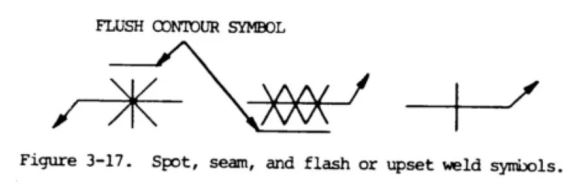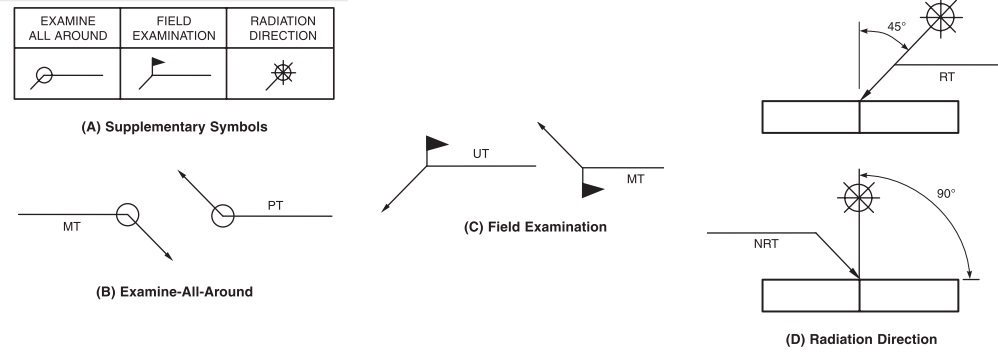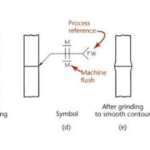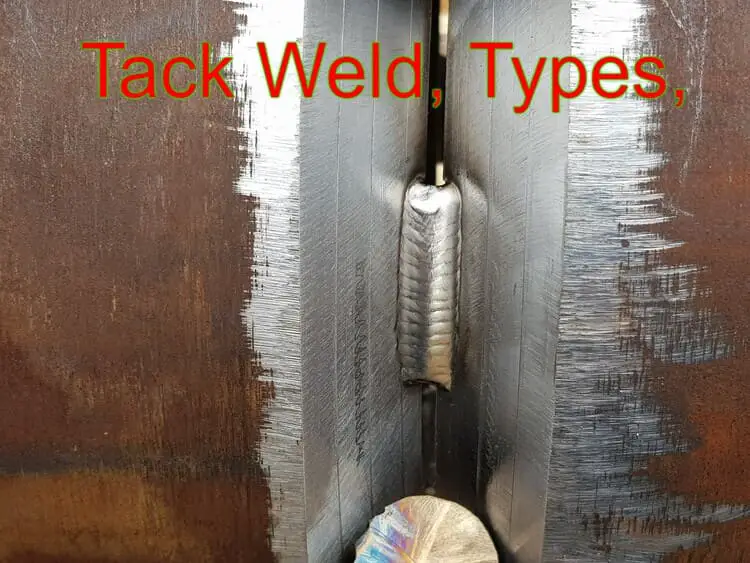In welding, the arrow side and the other side are terms used to describe the two sides of a welded joint. The arrow side refers to the side of the joint where the welding will begin, and it is usually indicated on the welding symbol by an arrow pointing to the joint. The other side refers to the opposite side of the joint that is not the arrow side.
The arrow side and the other side may have different requirements in terms of preparation, welding technique, and inspection. For example, the arrow side may require more preparation and a specific welding technique to ensure proper fusion and penetration, while the other side may have less stringent requirements.

By specifying the arrow side and the other side on the welding symbol, the welder and other personnel involved in the welding process can ensure that the joint is prepared and welded correctly to meet the desired specifications and standards.
Location of the Weld with Respect to Joint
The location of the weld with respect to the joint is a critical aspect conveyed through weld symbols on engineering drawings. The positioning of the weld symbol indicates whether the weld is on the arrow side, other side, or both sides of the joint. Understanding these locations is essential for interpreting welding requirements accurately. Let’s explore each location in detail:
Arrow Side
Welds on the arrow side of the joint: Weld symbols are placed on the side of the reference line facing the reader. This placement indicates that the weld is on the side of the joint where the arrow is pointing.

Other Side
Welds on the other side of the joint: Weld symbols are positioned on the side of the reference line opposite to the reader. This placement signifies that the weld is on the side of the joint away from the direction of the arrow.

Both Sides
Welds on both sides of the joint: Weld symbols are placed on both sides of the reference line. This dual placement represents welding requirements on both sides of the joint, both towards and away from the reader.

No Side Significance
Certain weld symbols, such as resistance spot, resistance seam, and flash weld symbols, do not inherently indicate a specific side. However, supplementary symbols used in conjunction with these symbols may provide additional information.

For example, the flush contour symbol is used with spot and seam symbols to indicate that the exposed surface of one member of the joint should be flush.
Arrow Side Welding Symbol
The Arrow Side Welding Symbol, also known as the “near side” or “front side” symbol, is used to indicate that a weld is to be placed on the side of the joint that the arrow is pointing to. This is important for welders to understand which side of the joint needs to be welded.

The Arrow Side Welding Symbol consists of an arrow connecting to a reference line and is typically accompanied by a weld symbol that specifies the type of weld required, such as a fillet, groove, or plug weld. The weld symbol is placed on the same side of the reference line as the arrow to indicate that the weld is to be performed on the arrow side.
The arrow side welding symbol is a common feature of welding symbols used to indicate the side of a joint where welding is to placed. The arrow side welding symbol is important because it helps to ensure that the welding is performed on the correct side of the joint. Welding on the wrong side of the joint can result in poor fusion, lack of penetration, or even a complete failure of the joint. In some cases, it may also result in defects that are not visible and can compromise the integrity of the joint over time.
To properly interpret the arrow side welding symbol, it is important to understand the different components of the welding symbol.
Other Side Welding Symbol
To properly interpret the other side welding symbol, it is important to understand how other side welding symbol is placed. The other side welding symbol is a welding symbol that indicates the side of a joint that is not the arrow side but opposite to welding symbol arrow placement.

On the contrary, the Other Side Welding Symbol, also known as the “far side” or “back side” symbol, indicates that the weld should be performed on the side opposite to the one the arrow is pointing at. Similar to the Arrow Side Welding Symbol, the Other Side Welding Symbol consists of an arrow connecting to a reference line, with the weld symbol placed on the opposite side of the reference line.
Understanding the difference between the Arrow Side and Other Side Welding Symbols is crucial for welders to accurately interpret and execute the welding tasks as specified on a blueprint or drawing.
Welding Symbol for Both sides Welding
The welding symbol for both sides welding is used to indicate that welding is required on both sides of a joint. In some cases, a weld may need to be performed on both sides of a joint (as shown in example below). In such instances, the Welding Symbol for Both Sides Welding is used.

This symbol includes an arrow connecting to a reference line, with weld symbols placed on both sides of the reference line. By doing so, it specifies that the weld is required on both the arrow side and the other side of the joint.
This symbol is particularly useful for projects where double-sided welding is necessary for added strength, stability, or quality assurance.
Welding Symbols with no side significance
Occasionally, a welding symbol may not indicate any specific side preference for the weld. In these cases, the Welding Symbols with No Side Significance come into play. These symbols consist of a reference line with the weld symbol placed centrally above or below the line, without an accompanying arrow.

Welding Symbols with No Side Significance are typically used in situations where the weld can be performed on either side of the joint without affecting the overall design, function, or integrity of the final product. Examples of No side significance welding symbol is seam welding.
below are some common examples for arrow side, other side and weld on both sides welding symbols.









